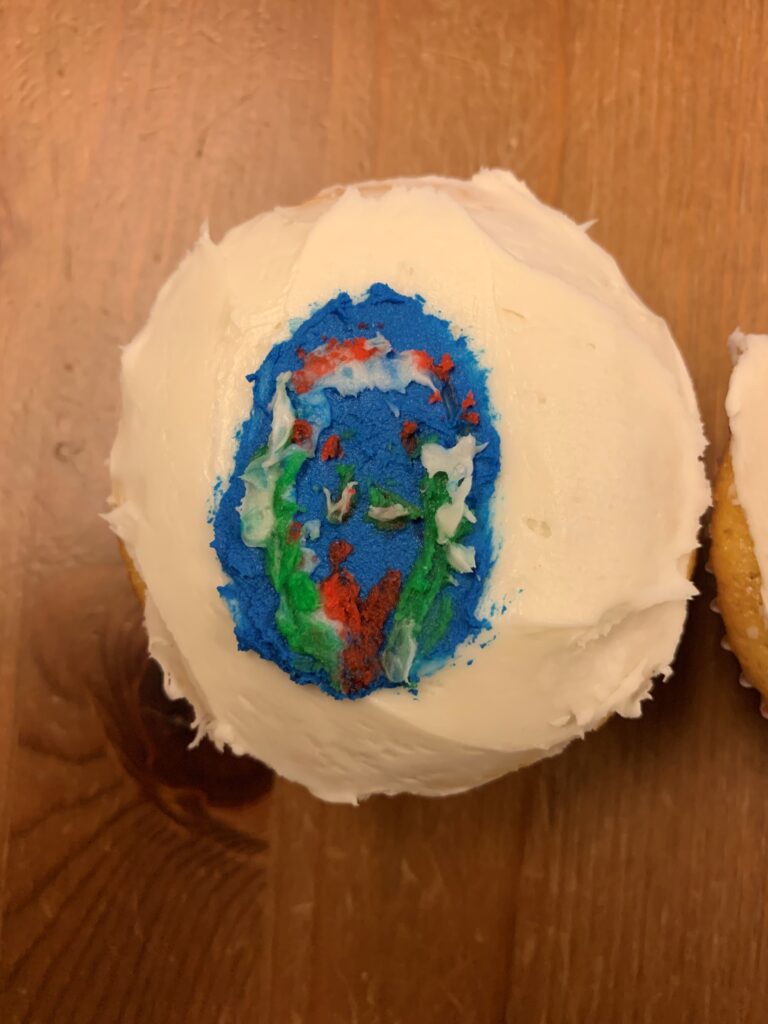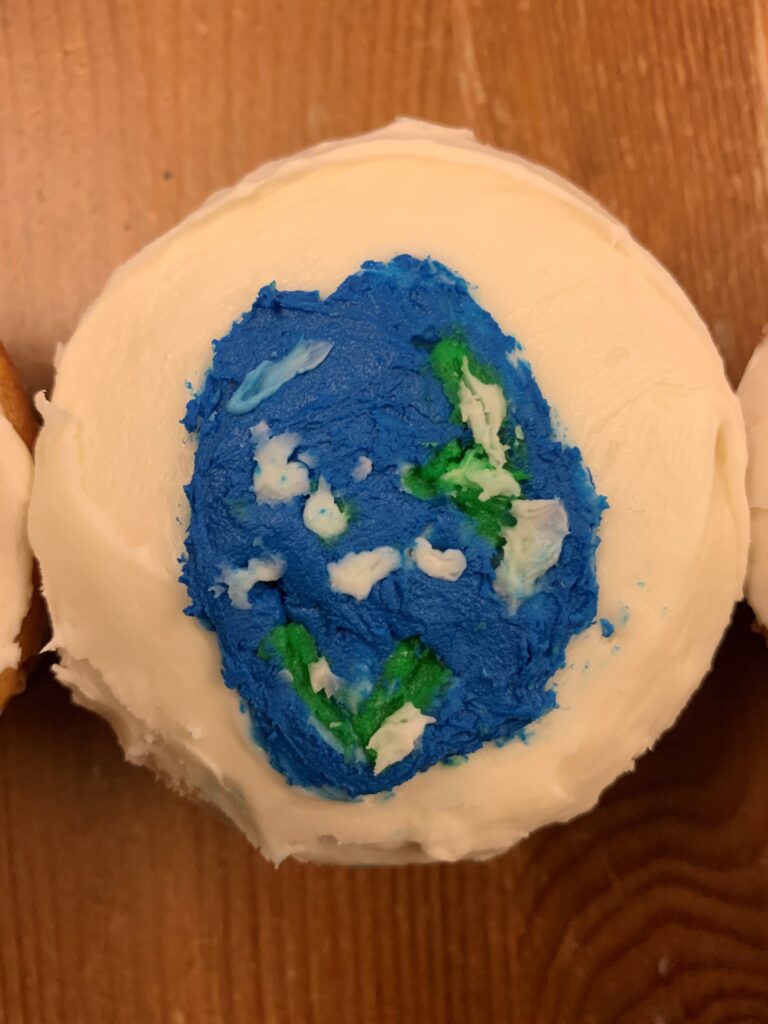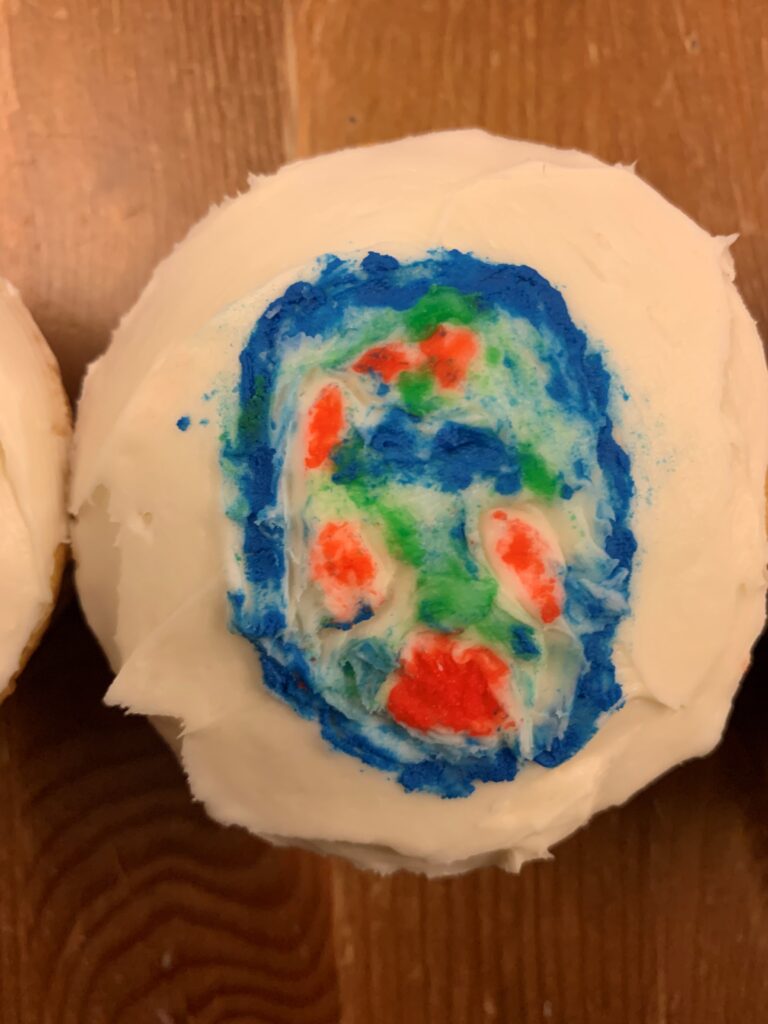I used cupcakes and icing in order to depict PET scans of the brain. The different cupcakes showcase different areas of mental activity while having different mental illnesses. The top to bottom of the cupcakes depict the front to back of the brain from a top view. This means that the frontal lobe is closer to the top of the picture and the occipital lobe is closer to the bottom of the photo.






Cassie Erdman chose cupcakes as her media. Her objective was to identify the 4 main structures of the brain and their functions. To go with this objective, Cassie chose PET scans of brains with different mental illnesses and one of a normally functioning brain as her topic. Each cupcake portrays a PET scan of a brain.
Her first cupcake depicts a brain with normal functionality. Cassie used colored icing to show where and at what level there was activity in the brain. In this first picture, the icing shows that there is normal activity. Blue represents the least amount of activity and red represents the most activity. The second cupcake is of a brain with depression. You can see that the areas where the amygdala and the hippocampus are located are active but the activity is less than in a normally functioning brain. The activity is very isolated and in a healthy brain, the activity is evenly spread out. While the amygdala is very active, it’s mainly processing negative emotions. While you cannot see this in the PET scan, further studies show that depression causes the amygdala to focus on processing negative emotions. This explains why the amygdala is so active in the brain with depression. The third cupcake shows the highs that are experienced in bipolar depression, the fourth highlights the memory formation struggle experience in the occipital lobe, and the fifth shows how active the voluntary movement parts of the brain are and the struggle to control them.